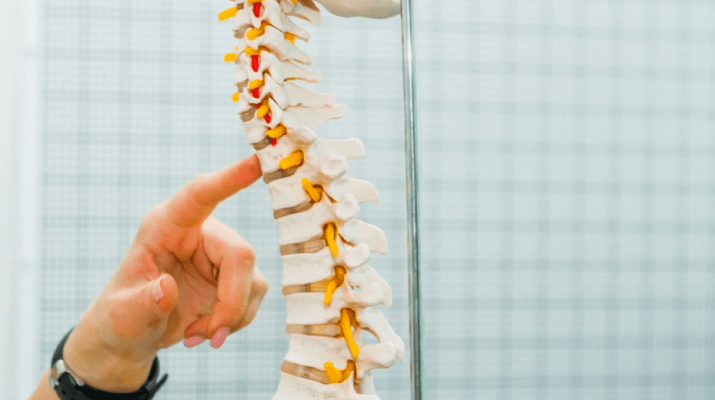Back injuries or spine injuries can be the result of trauma, aging, or damage to the bones, muscles, or other structures that form the spine and back. Some of the most common types of spine and back injuries are:
You can know about the spine surgeon salary to pay at the clinic. The gathering of the information related to it is necessary for people. You can know about it to perform a surgery and other procedure. Understanding about them is essential to get the effective results.

- Strains and sprains
- Herniated discs
- Fractured vertebrae
The lumbar or lower back area is a frequent site of back pain caused by spine injuries or back injuries. This area is susceptible to injury because it bears much of the body’s weight on a regular basis, and it is very flexible. About 50% to 70% of the general population of the United States is affected by lower back pain.
Twenty-six bones, called vertebrae, make up the spine. The vertebrae protect your spinal cord and they let you bend over and stand up straight. A back injury or spine injury can change the structure of the spine, or it can damage the vertebrae, muscles, discs and other tissues around the bones. Some examples of spine and back injuries and disorders include:
- Medical disorders, like ankylosing spondylitis and kyphosis or scoliosis
- Traumatic injuries like falls, motor vehicle accidents, gunshot wounds
- Tumors
- Conditions caused by aging, like herniated discs or spinal stenosis
- Infections like osteomyelitis
Spinal diseases can lead to spine injury and pain if the spinal nerves or the spinal cord is compressed. Spine and back injuries caused by diseases can limit mobility. Doctors recommend treatment for back and spine injuries based on their cause. Treatment may include antibiotics, bracing, physical therapy, or surgery.
Back injuries and exercise
Staying physically active and getting regular exercise can reduce the risk of back injuries and spine injury. Regular activity can also improve your mood and add fun and enjoyment to your life. Exercise increases a person’s sense of well-being.
Many sports activities increase the risk of back or spine injury. This is why it is so important to keep the spine’s supporting structures strong and flexible. When your muscles are strong and your spine is healthy, your chance of suffering a spine injury or back injuries is reduced.
Your back and your abdominal muscles are vital in the support of your spine. Exercise targeted at these muscle groups is sometimes referred to as core strengthening. A physical therapist or physician is a good resource to guide you in core strengthening exercises to prevent back injuries. If you have a back or spine injury, ask your doctor when it is safe to resume your activity and about ways to increase your safety when you are participating in sports activities.
Biking
Bicycling builds strength in the leg muscles, but it provides little benefit to the spine. Arching your back and bending forward on a bike can cause back injuries due to straining of the back and neck muscles. Mountain biking on rough and uneven terrain can cause spine injuries because of jerking and jarring of the vertebrae.
- To prevent spine injuries and back injuries while biking:
- Ride a bike that fits: Staff at a bike shop can help you choose the right bicycle for you.
- Avoid biking on rough and uneven ground. This will reduce your risk of spine injury.
- Pull up on the pedals in addition to using downward force on the pedals
- Get a grip: Biking gloves can help you keep control of your bike, decrease jarring, and reduce the risk of back injuries
- Install shock absorbers: Put these on the front wheels to reduce your chances of a spine injury or back injuries
- Sit upright: This will take pressure off your lower back and neck
- Choose a recumbent bike: This form of biking exerts the least amount of stress on your back
Weightlifting
Weightlifting causes spine injuries and back injuries especially in people over 40 years old. This is due to changes that occur in the spinal discs as a result of aging.

To decrease your chances of back injuries when weightlifting:
Do some form of aerobic exercise for 15 to 20 minutes prior to lifting to warm up your muscles.
To decrease your risk of back injuries, use weight machines instead of free weights. Weight machines put less stress on your back than free weights.
Add repetitions to your workout instead of adding weight. Added weight increases the risk of back injuries.
Hire a trainer to teach you proper lifting techniques and ways to avoid spine injuries.
Avoid exercises that are most likely to cause back injuries:
- dead-lifts
- snatches
- squats
- clean-and-jerks
- Golfing
Spine and back injuries are common in golfers. This is because a golf swing requires a force-filled rotation in the spine. This puts tremendous pressure on the joints, discs, muscles, and ligaments of the spine.
To decrease the risk of back injuries when golfing:
- Ask a trainer or your physical therapist about postures and techniques to prevent back injuries and spine injuries
- Warm up your back and leg muscles before starting a round of golf.
- When bending over to pick up a ball, bend at the knees, not from the waist to prevent back injuries.
- Use a pushcart for your golf bag instead of carrying your heavy clubs to decrease the risk of spine injuries.
- Running
- The repetitious jarring of running can cause back injuries due to compression of the spinal joints.



